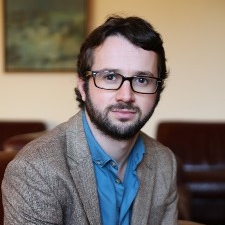Bioactive Glasses: Theory, Methods and Applications
A special issue of Applied Sciences (ISSN 2076-3417). This special issue belongs to the section "Materials Science and Engineering".
Deadline for manuscript submissions: closed (30 June 2021) | Viewed by 242
Special Issue Editor
Interests: Dr Clarkin’s research background has been focused on orthopaedic and dental biomaterials, including calcium phosphate, poly(methyl methacrylate) and glass poly(alkenoate) cements. However, his current research focus is on hydrogel-based composite materials for the treatment of vascular diseases, including cerebral aneurysms, arteriovenous malformations and dural fistulae. Dr Clarkin has considerable expertise in both hard and soft tissue biomaterials for numerous medical device applications, with specific expertise in the design of bioactive glasses for biomedical applications. He also has an active interest in self-setting, tough double-network hydrogels for biomedical applications, controlled drug release devices and acellular bioactive tissue engineering, as well as biodegradable and compostable sustainable materials.
Special Issue Information
Dear Colleagues,
Tissue engineering holds great promise for organ regeneration, but without the correct scaffolds, the dream of rapid regeneration via tissue engineering remains beyond our grasp. Tissue engineering scaffolds must provide an optimised environment for cell differentiation and tissue regeneration. Today, many implanted tissue engineering constructs fail as a result of cell death due to poor nutrient diffusion or host response.
Despite their inherent brittleness, bioactive glasses have several appealing characteristics as scaffolds for tissue engineering. However, when combined with highly permeable polymeric phases such as hydrogels, not only can mechanical properties be tailored for bony applications, but the range of applications can be expanded into soft tissue engineering sites such as those of blood vessels and cartilage.
Bioactive materials in bone tissue engineering are often narrowly considered as those that have the ability to bond to mineralised bone tissue in the physiological environment. However, for tissue engineering constructs to be successful, this level of bioactive response is not sufficient. Materials must not only elicit a positive immune response, but must actively encourage local angiogenesis, cell division, differentiation and extracellular matrix production. Bioactive glass scaffolds and their composites remain one of the few platforms which can provide the adaptable sustained release of ionic components that encourage such in vivo responses, while providing a suitable platform for mechano-transduction stimuli, nutrient, drug and growth factor encapsulation, diffusion and sustained release.
This Special Issue of Applied Sciences, “Bioactive Glasses: Theory, Methods and Applications”, is intended to cover recent advances in bioactive glasses and their composites, including:
- Structural aspects of bioactive glasses (formulation and spectroscopic analysis);
- Production methods and novel forms (e.g., electrospinning, nano-sphere production, hollow microspheres, etc.);
- Advanced mechanical analysis of bioactive glasses and their composites;
- In vitro analysis investigating the bioactive potential of bioactive glasses and their composites;
- In vivo analysis investigating the bioactive potential of bioactive glasses and their composites.
Dr. Owen Clarkin
Guest Editor
Manuscript Submission Information
Manuscripts should be submitted online at www.mdpi.com by registering and logging in to this website. Once you are registered, click here to go to the submission form. Manuscripts can be submitted until the deadline. All submissions that pass pre-check are peer-reviewed. Accepted papers will be published continuously in the journal (as soon as accepted) and will be listed together on the special issue website. Research articles, review articles as well as short communications are invited. For planned papers, a title and short abstract (about 100 words) can be sent to the Editorial Office for announcement on this website.
Submitted manuscripts should not have been published previously, nor be under consideration for publication elsewhere (except conference proceedings papers). All manuscripts are thoroughly refereed through a single-blind peer-review process. A guide for authors and other relevant information for submission of manuscripts is available on the Instructions for Authors page. Applied Sciences is an international peer-reviewed open access semimonthly journal published by MDPI.
Please visit the Instructions for Authors page before submitting a manuscript. The Article Processing Charge (APC) for publication in this open access journal is 2400 CHF (Swiss Francs). Submitted papers should be well formatted and use good English. Authors may use MDPI's English editing service prior to publication or during author revisions.
Keywords
- Bioactive glass
- Tissue engineering
- Tissue regeneration
- Angiogenesis
- Drug encapsulation diffusion and release
- Mechano-transduction stimuli
- Sustained ionic release





